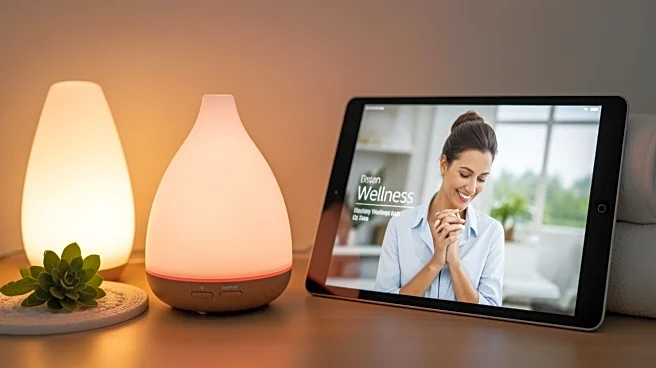What's Happening?
The landscape of wellness marketing is undergoing significant changes as brands adapt to the evolving consumer expectations for holistic health experiences. Traditional direct-to-consumer (DTC) and healthcare provider (HCP) marketing strategies are being
replaced by omnichannel approaches that integrate various media platforms. Consumers are increasingly seeking solutions through a multitude of touchpoints, including social media, telehealth, and commerce channels. This shift is driven by the convergence of pharma advertising, wellness content, beauty routines, and nutritional guidance, creating a complex ecosystem where brands must meet consumers wherever they are. The rise of health creators, such as 'Tok docs' and wellness influencers, is reshaping health narratives and influencing consumer decisions more than traditional advertising methods.
Why It's Important?
This transformation in wellness marketing is crucial as it reflects broader changes in consumer behavior and expectations. Brands that successfully navigate this complexity stand to build lasting relationships with consumers by providing transparent, human-centered communication. The integration of creator partnerships into regulated pharmaceutical marketing presents both opportunities and challenges, requiring brands to maintain compliance while leveraging authentic voices. The growing trust deficit in pharmaceutical marketing underscores the need for brands to rebuild trust through transparent communication and engagement with underserved communities. By addressing these challenges, brands can enhance their presence and trust across all points of care, ultimately benefiting both consumers and the healthcare industry.
What's Next?
Brands are encouraged to diversify their channel mix and avoid over-reliance on any single platform. Integrated campaigns across connected TV (CTV), programmatic, social media, and point-of-care channels are essential to adapt to market shifts. Strategies should focus on authentic connection and education, leveraging curated media networks and verified HCP partnerships to ensure engagement across diverse audiences. Responsible use of first-party data for privacy-safe targeting is also recommended, enabling personalization based on real consumer behavior. Investing in creator partnerships that align with brand values can strengthen trust and humanize the brand, positioning it for success in the evolving wellness marketing landscape.
Beyond the Headlines
The ethical responsibility of brands to engage with underserved communities is a significant aspect of this marketing shift. By providing vital health information and support programs, brands can demonstrate their commitment to more than just profitable customers, fostering trust and equity in healthcare access. This approach not only fulfills ethical obligations but also positions brands as leaders in patient-centric marketing strategies, potentially influencing long-term industry standards.













